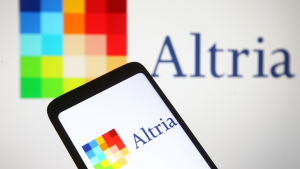From the first one’s transformative lead to the second one’s merger ambitions, the third one’s cost-efficient strategies, and the fourth one’s innovation drive, the article deciphers the financial narratives shaping these companies. The fifth one’s adaptive prowess in the tobacco industry, the sixth one’s proactive approach in TiO2, and the seventh one’s diversified offerings suggest how these entities navigate challenges while sustaining high dividend yields.
Read more about these companies’ dividends, mergers, innovations, and strategic initiatives. These fundamentals represent the core income-generating powerhouses.
Sasol (SSL)

Sasol (NYSE:SSL) boasts a trailing twelve-month dividend yield of 9.64% with an annual payout of $0.91. Cost and capital management are fundamental to Sasol’s ability to navigate economic challenges and ensure profitability.
Also, the Sasol 2.0 transformation program’s success in realizing over ZAR 7 billion in net sustainable annual cash fixed cost savings and ZAR 6.4 billion in gross margin improvements is a significant strength. These attainments indicate the effectiveness of Sasol’s cost management strategies and the impact of the transformation program on the company’s bottom line.
Looking forward, the decision to reset targets for 2024 and 2025, seeking an additional ZAR 4 billion in annual EBITDA enhancements by 2025, showcases Sasol’s focus on continuous improvement. Lastly, Sasol’s focus on renewable energy and sustainability initiatives aligns with global trends and regulatory expectations. Thus, the focus on achieving 1,200 megawatts of large-scale renewable integration by 2030 is a vital target.
Realty Income (O)

Realty Income (NYSE:O) presents a forward dividend yield of 5.23%, coupled with an anticipated annual payout of $3.07. With a payout ratio of 73.97%, the company has shown a commendable five-year growth rate of 3.66% and a solid dividend growth streak of 26 years.
To support such growth consistency, Realty Income entered into a definitive merger agreement with Spirit Realty, valued at $9.3 billion. This marks a vital strategic move with the potential to reshape the company’s growth trajectory. The value attached to this merger suggests the scale and ambition behind the decision. Hence, this may instantly affect adjusted funds from operations (AFFO) per share, further strengthening the deal’s appeal.
Finally, Realty Income’s growth in AFFO per share is a key indicator of the company’s fundamental value. In Q3 2023, AFFO per share grew by 4.1% year-over-year, reaching $1.02. Therefore, this growth suggests the company can generate higher funds from its real estate assets.
Verizon (VZ)

Verizon (NYSE:VZ) exhibits a forward dividend yield of 6.90% and an annual payout of $2.66, resulting in a moderate payout ratio of 54.41%. The telecommunications giant has achieved a 5-year growth rate of 2.01%, with a consistent dividend growth track record spanning 19 years. Verizon’s proactive approach to debt reduction is vital to support investors’ income. This can be observed in a $2.6 billion reduction in debt during Q3.
Furthermore, Verizon focuses on effective cost management. The cost-efficiency program is on track to achieve savings of $2 billion to $3 billion annually by 2025. This reflects the company’s dedication to optimizing its operations and improving overall efficiency.
Finally, the approximately 4% year-over-year reduction in operating expenses (excluding depreciation and amortization) further demonstrates Verizon’s focus on cost control. Fundamentally, this reduction signifies that the company successfully manages its day-to-day operational costs, contributing to improved profitability.
AT&T (T)

AT&T (NYSE:T) offers a forward dividend yield of 6.74% with an annual payout of $1.11, boasting a relatively lower payout ratio of 44.76%. As a fundamental support for profitability, AT&T’s focus on innovation is evident in its introduction of AT&T Internet Air, a fixed wireless product. The strategic deployment of such products aligns with customers’ evolving demands and provides AT&T with flexibility in capitalizing on specific market needs.
In terms of numbers, the successful launch of AT&T Internet Air is based on the addition of about 25K subscribers, contributing to positive net broadband growth of 15K subscribers in Q3 2023. The positive early reception of the service indicates that it fulfills a particular niche in the market and serves as a targeted catch-up product.
Finally, the company’s exploration of the long-term benefits of the inevitable convergence of 5G and fiber. The early stages of reaping these benefits indicate a strategic vision anticipating upcoming market demand. Hence, the integration of services is already demonstrating positive effects, with areas where fiber is deployed experiencing an uptick in mobility growth.
Altria (MO)

Altria (NYSE:MO) stands out with a forward dividend yield of 9.48% and an annual payout projection of $3.92, resulting in a payout ratio of 76.77%. The tobacco company has demonstrated a commendable five-year growth rate of 5.06%, with an impressive track record of dividend growth spanning 54 years.
At its core, Altria’s lead is in the oral tobacco segment, particularly with products like On! and On! PLUS. This suggests the company’s capability to adapt to changing consumer preferences. The notable 5% increase (Q3 2023) in total US oral tobacco volumes over the past six months signals a growing demand for nicotine pouches, and On! has positioned itself strategically to capitalize on this trend. The 10% year-over-year growth in full nicotine pouches represents more than 32% of the US oral tobacco category.
Furthermore, On! has not only focused on volume growth but also suggests Altria’s focus on improving profitability. By applying evolving analytical resources to be more flexible with promotions in the marketplace, On! achieved a significant increase in retail price sequentially and year-over-year.
Despite a 33% sequential increase and a 52% year-over-year increase in retail prices, On! experienced encouragingly high levels of trial and adoption, with repeat purchases up more than 35% year-over-year. Overall, these developments suggest vital support for profitability and dividend growth.
Kronos (KRO)

Kronos (NYSE:KRO) presents an 8.23% forward dividend yield and an annual payout estimate of $0.76. The company has a five-year growth rate of 2.25%. To support profitability and payout, Krono’s strategic initiatives navigate the challenges faced by the TiO2 industry. The company focuses on preserving liquidity; process improvements and cost-saving measures indicate the company’s proactive approach.
Under liquidity preservation and cost reduction measures, the company is operating plants at reduced rates to align inventory levels with near-term demand, preserving liquidity. Specifically, process improvements and manufacturing efficiencies are implemented to mitigate the impact of unabsorbed fixed costs.
Despite the historic downturn in the TiO2 industry, the company is confident in the steps taken over the last 12 months to preserve liquidity and reduce costs, foreseeing value creation in 2024 and beyond. Although there is an anticipation of improved demand in certain markets, low customer inventories and reduced industry capacity are potential catalysts for a return to profitability.
Finally, as a key point, operating at reduced capacity allowed for accelerated facility maintenance, positioning the company to capitalize quickly when industry demand strengthens.
Western Union (WU)

Western Union (NYSE:WU) offers a forward dividend yield of 7.71%, with an expected annual payout of $0.94. With a payout ratio of 55.62%, the company has achieved a reasonable five-year growth rate of 4.34%.
As a key fundamental, despite continued investments in the Evolve 2025 Strategy, Western Union maintained a solid operating margin range of 19% to 21% (Q3 2023). The decline of over 20% year-to-date in customer acquisition cost (CAC) is primarily led by efficiencies in the marketing program. Fundamentally, the ability to achieve cost-effectiveness, as reflected in the declining CAC, showcases Western Union’s efficiency in managing its resources. Despite investments in strategic initiatives, the company has achieved balance and maintained strong operating margins.
On the other hand, there is the introduction of a prepaid debit card solution in the US and the expansion of the ecosystem, offering digital wallets and lending solutions. Onboarding nearly 200K customers into the ecosystem indicates early success, indicating Western Union’s focus on diversifying its product offerings.
As of this writing, Yiannis Zourmpanos held long positions in VZ and T. The opinions expressed in this article are those of the writer, subject to the InvestorPlace.com Publishing Guidelines.
Yiannis Zourmpanos is the founder of Yiazou Capital Research, a stock-market research platform designed to elevate the due diligence process through in-depth business analysis.
